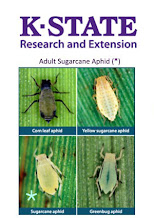It’s Barefoot Season… Beware of Stickers!
Jenae Ryan- Horticulture Agent
It is important to know that there are different kinds of plants that produce stickers, and require different types of herbicide for their control. The best weed control is a good, thick lawn, but in some cases, herbicides are required.
Puncturevine (a.k.a. goatheads)
Puncturevine, Tribulus terrestris, is a broadleaf summer annual with a prostrate growth habit. This is the plant most commonly identified as “stickers.” The seeds are contained in the spiny seedpods that poke our bare feet and get stuck on our shoelaces. The plant has a deep taproot that can help it survive very dry and harsh conditions.
There are a few different herbicides recommended for controlling puncturevine. If the area is bare or in a location where the surrounding vegetation is not important, glyphosate (Roundup) can be used. It is a non-selective herbicide, so don’t let it contact plants you want to keep healthy. Other herbicides include: oryzalin (Surflan, Weed Impede), pendimethalin (Pre M, Scotts Halts), or trifluralin (Treflan). 2,4 D, MCPA, or Dicamba can be used, but only when the plants are young. They are less effective on mature plants.
Grassy Sandbur
A good nutrient fertility program and proper mowing can help keep grassy sandbur in check. If the lawn is still thin next spring, use a pre-emergence herbicide before the sandbur comes up. However, not all pre-emergence herbicides are effective. The three products that can help minimize grassy sandbur are oryzalin, pendimethalin and prodiamine. Quinclorac (Drive) can provide some postemergence control especially if the sandbur is in the seedling stage. Quinclorac is also found in a number of combination products that control both broadleaf weeds and crabgrass.
For more information on lawn weeds, check out the publication “Weed Control in Home Lawns” from K-State Research and Extension: http://www.bookstore.ksre.ksu.edu/pubs/mf2385.pdf








